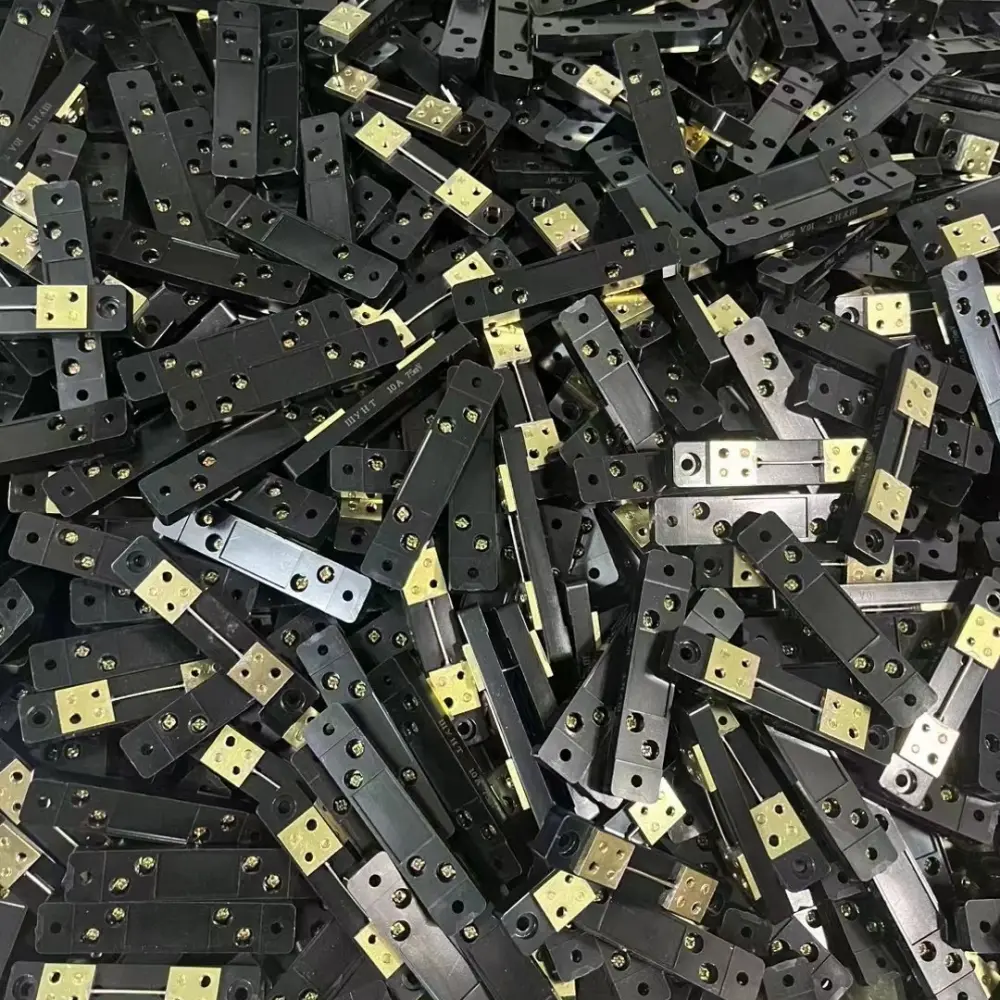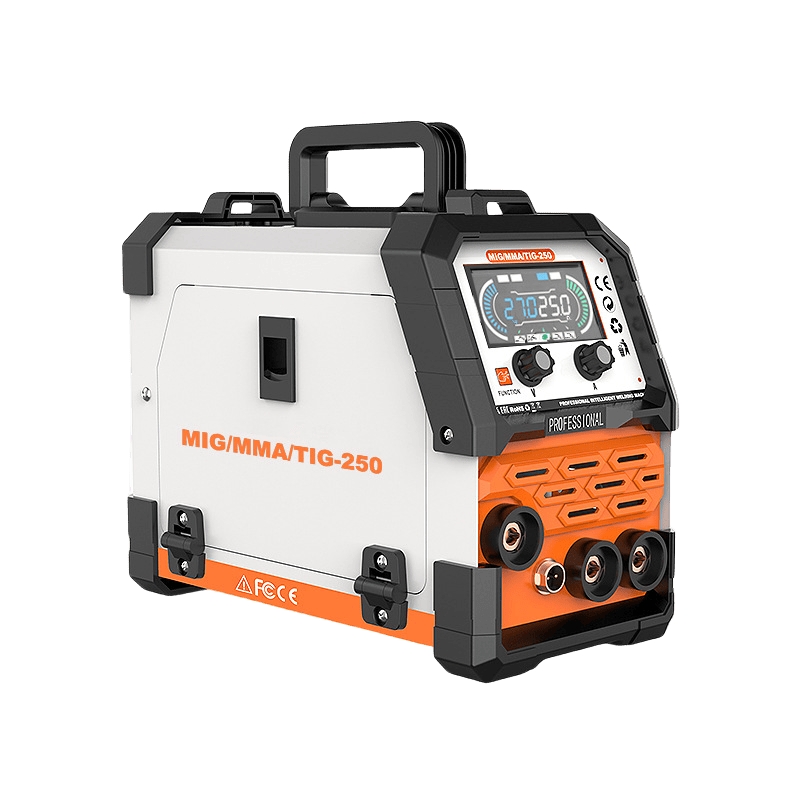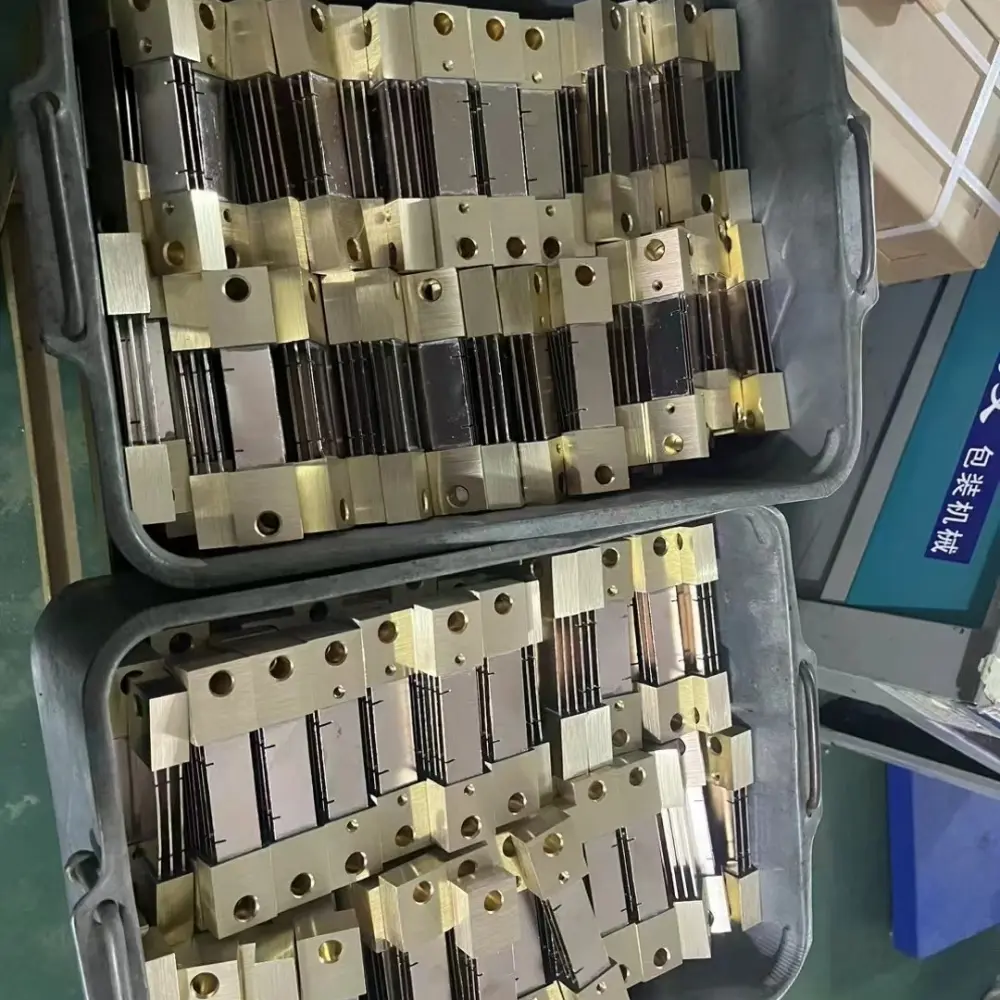In today’s competitive manufacturing environment, energy efficiency has become a critical factor in operational success. Welding processes, known for their energy-intensive nature, present significant opportunities for optimization and cost reduction. This article explores how high-precision DC shunts can play a pivotal role in reducing energy consumption while maintaining or even improving welding quality. Ready for the good part? Let’s explore how precision current control can not only reduce costs but also improve your operational efficiency.
The Energy Footprint of Welding Operations
Welding’s Energy-Intensive Profile
Welding operations are among the most energy-demanding processes in the manufacturing sector. But here’s the kicker—without effective energy management, the energy costs for welding can quickly spiral out of control:
- A typical industrial welding machine consumes between 10-45 kWh during an eight-hour shift.
- Arc welding processes convert only 70-85% of input energy into usable heat.
- Idle time energy consumption can account for 20-30% of total energy usage.
- Power quality issues, such as poor power factor, can further increase effective energy costs.
- Peak demand charges can significantly impact overall electricity expenses.
For manufacturers with multiple welding stations, these factors can combine to create substantial energy costs. These energy expenses directly affect product pricing and can hinder competitiveness in the market. This is where optimizing energy consumption through the use of precise current control can make a difference.
| Energy Consumption Factor | Typical Value | Impact on Cost |
|---|---|---|
| Energy Consumption per Shift | 10-45 kWh | Significant cost driver in production |
| Energy Conversion Efficiency | 70-85% | Loss of energy as heat, leading to waste |
| Idle Time Consumption | 20-30% of total energy | Unnecessary energy use when idle |
| Power Quality Issues | Poor power factor | Increased electricity costs |
| Peak Demand Charges | High during operation peaks | Added costs during peak hours |
The Hidden Costs of Imprecise Current Control
Beyond direct energy consumption, imprecise welding current control can create additional energy-related costs that often go unnoticed:
- Overwelding: Applying more current than necessary wastes energy and can damage materials.
- Rework: Failed welds require additional energy consumption to repair.
- Extended operation: Inconsistent performance extends process time and energy usage.
- Excessive spatter: Poor arc control increases cleanup requirements and material waste.
- Premature component failure: Current spikes reduce equipment lifespan, requiring energy-intensive manufacturing of replacement parts.
What’s the real story? These hidden costs, arising from inefficiency in current control, often exceed the direct energy expenses. This makes current control precision a key factor in overall operational efficiency, driving up both direct and indirect costs. High-precision DC shunts, however, offer a way to combat these issues by enabling precise control over the welding current.
| Hidden Cost Factor | Impact | Additional Energy Usage |
|---|---|---|
| Overwelding | Wasting energy and damaging materials | More energy consumed, poor quality |
| Rework | Requires additional energy | Increased energy use for repairs |
| Extended operation | Longer welding times | Higher energy consumption |
| Excessive spatter | Material and energy waste | Increased cleaning costs |
| Premature component failure | Reduced equipment lifespan | More energy to produce replacements |
DC Shunts in Energy Management: The Precision Connection
High-precision DC shunts play a crucial role in optimizing energy use in welding operations. But here’s the kicker—by providing accurate, real-time current measurement, DC shunts help minimize unnecessary energy consumption while ensuring optimal weld quality. Let’s dive deeper into how these components drive energy efficiency.
Precise Current Control Reduces Energy Waste
The relationship between current accuracy and energy efficiency is direct and significant. Ready for the good part? When current is precisely measured, welding systems can apply only the necessary amount of energy:
- Elimination of excessive current: Precise measurement ensures that only the required current is used, reducing energy waste.
- Optimal parameter selection: Accurate data enables identification of minimum effective current levels, further conserving energy.
- Consistent performance: Stability reduces the need for safety margins, optimizing energy use.
- Process optimization: Real-time data allows for fine-tuning, maximizing energy efficiency.
- Quality assurance: Precision minimizes the risk of rework, avoiding additional energy consumption.
Research indicates that improving current measurement accuracy from ±5% to ±0.5% can reduce overall energy consumption by 7-12% in typical welding operations. This reduction is achieved simply by eliminating unnecessary excess current. It’s a simple change, but it leads to significant energy savings over time.
| Energy Optimization Factor | Result | Impact on Energy Consumption |
|---|---|---|
| Elimination of Excessive Current | Only necessary current applied | Reduced energy consumption |
| Optimal Parameter Selection | Identifies lowest effective current | Energy is only used as needed |
| Consistent Performance | Reduced fluctuations in current | Lower energy waste |
| Process Optimization | Real-time data helps refine welding | Efficient energy usage across shifts |
| Quality Assurance | Less need for rework | Decreased rework energy costs |
Determining Optimal Welding Parameters
DC shunts with high accuracy classes (0.1-0.5%) enable welding engineers to determine truly optimal parameters. Let’s explore how precise current control can unlock energy savings:
- Minimum effective current: Determine the lowest current that ensures acceptable weld quality, preventing unnecessary energy consumption.
- Optimal duty cycles: Identify the most efficient operating patterns, further conserving energy.
- Material-specific optimization: Tailor parameters for different materials and thicknesses, reducing excess energy usage.
- Joint-specific settings: Adjust energy input based on the specific joint configuration, optimizing every weld.
- Process-specific tuning: Fine-tune settings for each type of welding process to ensure minimal energy use.
A manufacturer of agricultural equipment implemented high-precision DC shunts across their welding operations and conducted systematic parameter optimization. The result was a 14% reduction in energy consumption while maintaining all quality standards—translating to annual savings of over $175,000 across their production facilities.
| Parameter Optimization Factor | Benefit | Energy Impact |
|---|---|---|
| Minimum Effective Current | Prevents unnecessary energy use | Reduces energy consumption |
| Optimal Duty Cycles | Maximizes energy efficiency | Lowers overall energy requirements |
| Material-Specific Optimization | Tailored settings for each material | Avoids wasteful overuse of energy |
| Joint-Specific Settings | Reduces energy for complex joints | Energy savings with minimal compromise |
| Process-Specific Tuning | Efficient use for each welding process | Saves energy across all operations |
Real-Time Energy Monitoring
Beyond parameter optimization, DC shunts enable continuous monitoring of energy usage. Ready for the good part? This real-time energy tracking provides valuable insights for further optimization:
- Instantaneous power calculation: Combining current data with voltage measurement provides real-time power data, helping identify inefficiencies.
- Energy consumption tracking: Integrating power data over time quantifies energy usage per weld, providing actionable data for optimization.
- Efficiency metrics: Calculating energy per unit length or weight of deposited material reveals further opportunities for savings.
- Comparative analysis: Benchmarking energy use across different machines, operators, or processes allows for performance improvement.
- Anomaly detection: Identifying unusual energy consumption patterns that may indicate problems, preventing excessive energy use.
This visibility transforms energy from a fixed overhead cost to a manageable variable, enabling ongoing optimization. The result? A reduction in waste and a boost in overall energy efficiency.
| Energy Monitoring Feature | Benefit | Impact on Energy Use |
|---|---|---|
| Instantaneous Power Calculation | Real-time data for immediate insights | Allows for rapid corrections |
| Energy Consumption Tracking | Quantifies energy per weld | Highlights areas for optimization |
| Efficiency Metrics | Energy per material unit | Targets specific areas for savings |
| Comparative Analysis | Benchmarks across machines/processes | Drives energy improvement efforts |
| Anomaly Detection | Detects inefficient energy use | Helps maintain energy-efficient operations |
Energy Optimization Strategies
With accurate current measurement from high-quality DC shunts, manufacturers can implement several proven energy optimization strategies. But here’s the kicker—these strategies, when combined with the right data, can lead to significant energy savings. Let’s see how:
Current-Based Process Optimization
Fine-tuning welding parameters based on precise current data yields significant energy savings. Here’s how the process works:
- Establish baseline performance: Measure current energy consumption per unit of production, setting a reference point for optimization.
- Identify minimum viable current: Determine the lowest current required to meet quality standards, preventing unnecessary energy use.
- Optimize voltage settings: Match voltage to the optimized current for efficient energy transfer.
- Refine travel speed: Adjust speed to maximize efficiency without compromising quality.
- Document optimal parameters: Standardize settings for different applications, ensuring consistent energy-saving practices.
This systematic approach typically yields energy savings of 10-15%, all while maintaining or improving weld quality.
| Optimization Strategy | Action | Energy Savings |
|---|---|---|
| Establish Baseline Performance | Measure current energy consumption | Sets a benchmark for optimization |
| Identify Minimum Viable Current | Prevents excess energy use | Lowers energy consumption |
| Optimize Voltage Settings | Match voltage to current for efficiency | Saves energy across welding cycles |
| Refine Travel Speed | Adjust speed for optimal energy use | Further energy savings |
| Document Optimal Parameters | Standardize efficient settings | Ensures consistency and efficiency |
Energy-Efficient Operational Practices
Beyond parameter optimization, operational changes can further reduce energy consumption. But here’s the kicker—making small adjustments in how operations are carried out can lead to meaningful energy savings. Here’s what to focus on:
- Idle time reduction: Implementing auto-sleep modes during inactive periods cuts down on unnecessary energy consumption.
- Sequencing optimization: Scheduling welding operations strategically to minimize peak demand charges.
- Workpiece preparation: Ensuring clean surfaces to minimize the energy needed for welding.
- Equipment maintenance: Keeping machines in top condition ensures maximum efficiency.
- Operator training: Teaching energy-efficient techniques and optimal parameter selection can contribute to ongoing savings.
These practices, guided by data from precision DC shunts, can reduce energy consumption by an additional 5-10%. This means even greater overall savings.
| Operational Strategy | Action | Energy Savings |
|---|---|---|
| Idle Time Reduction | Implement auto-sleep modes | Minimizes energy use during downtime |
| Sequencing Optimization | Stagger welding operations | Reduces peak demand charges |
| Workpiece Preparation | Ensure clean surfaces | Saves energy by reducing input needs |
| Equipment Maintenance | Regular machine upkeep | Maximizes operational efficiency |
| Operator Training | Teach energy-efficient techniques | Ongoing energy savings |
Peak Demand Management
For many manufacturers, peak demand charges represent a significant portion of their energy costs. What’s the real story here? Managing peak demand can lead to substantial savings. Here’s how:
- Load distribution: Staggering welding operations to avoid simultaneous peak draws helps minimize demand charges.
- Scheduled production: Plan energy-intensive welding during off-peak hours to avoid high electricity rates.
- Power quality management: Improving power factor reduces apparent power requirements, cutting costs.
- **Energy storage
integration**: Using storage systems to buffer peak demands can smooth out energy usage.
- Alternative power sources: Supplementing grid power with renewable energy or stored energy during peak periods.
A metal fabrication company implemented a demand management system based on real-time current data from DC shunts across 32 welding stations. By coordinating operations to limit simultaneous welding, they reduced peak demand by 28%, saving over $45,000 annually in demand charges alone.
| Peak Demand Strategy | Action | Energy Savings |
|---|---|---|
| Load Distribution | Stagger welding operations | Reduces simultaneous peak usage |
| Scheduled Production | Welding during off-peak hours | Avoids high electricity rates |
| Power Quality Management | Improve power factor | Lowers apparent power requirements |
| Energy Storage Integration | Use storage systems for buffering | Reduces grid dependence during peaks |
| Alternative Power Sources | Use renewable or stored energy | Mitigates peak demand charges |
Case Study: Energy Efficiency Improvement
Implementation Overview
A medium-sized manufacturer of construction equipment implemented an energy optimization program centered on high-precision DC shunts. Here’s what they did:
- Installed FL-19 series DC shunts with 0.1% accuracy class on all 24 welding stations.
- Connected shunts to a centralized monitoring system that calculated real-time power and energy.
- Established baseline energy consumption for standard operations.
- Conducted systematic parameter optimization for common weld types.
- Implemented operational best practices based on energy data.
- Trained operators on energy-efficient techniques.
Results and ROI Analysis
The program delivered impressive results across multiple metrics:
- Direct energy reduction: Overall welding energy consumption decreased by 17.3%.
- Peak demand reduction: Maximum demand dropped by 22.5%.
- Quality improvement: Rework decreased by 34% due to more consistent welding performance.
- Productivity increase: Process optimization reduced average welding time by 7.8%.
- Equipment lifespan extension: More precise operation reduced thermal stress on components.
Financial analysis showed:
- Implementation cost (including hardware, software, and training): $78,500.
- Annual energy cost savings: $112,000.
- Additional savings from reduced rework and improved productivity: $95,000.
- Simple payback period: 4.2 months.
- Five-year ROI: 1,320%.
The company also reduced its carbon footprint by approximately 175 metric tons of CO₂ annually, supporting sustainability goals.
| Metric | Before Implementation | After Implementation | Impact |
|---|---|---|---|
| Direct Energy Reduction | N/A | 17.3% reduction | Significant cost savings |
| Peak Demand Reduction | N/A | 22.5% reduction | Lower peak demand charges |
| Rework Reduction | N/A | 34% decrease | Reduced material waste |
| Productivity Increase | N/A | 7.8% improvement | Increased efficiency |
| Equipment Lifespan Extension | N/A | Reduced thermal stress | Longer equipment lifespan |
Environmental Impact Assessment
The energy efficiency improvements enabled by precision DC shunts not only result in cost savings but also provide significant environmental benefits:
Carbon Footprint Reduction
Reduced energy consumption translates to lower carbon emissions:
- Each kWh of electricity saved prevents approximately 0.4-0.7 kg of CO₂ emissions.
- A typical mid-sized welding operation can reduce emissions by 50-200 metric tons annually through optimization.
- Reduced material waste from improved quality further decreases embodied carbon.
- Extended equipment lifespan reduces manufacturing-related emissions.
- Optimized processes reduce transportation and logistics emissions.
Regulatory Compliance
Energy efficiency improvements help meet increasingly stringent environmental regulations:
- Meeting carbon reduction targets.
- Qualifying for energy efficiency incentives and tax benefits.
- Supporting ISO 50001 energy management certification.
- Enhancing sustainability reporting for stakeholders.
Corporate Social Responsibility
Energy efficiency initiatives also contribute to broader corporate responsibility goals:
- Demonstrating commitment to environmental stewardship.
- Meeting customer expectations for sustainable manufacturing.
- Attracting environmentally conscious employees and partners.
- Contributing to industry sustainability benchmarks.
Implementation Path and Recommendations
For welding machine manufacturers and users looking to implement energy optimization through precision current measurement, we recommend a phased approach:
Assessment and Planning
- Evaluate current performance and identify variations in energy consumption.
- Set specific, measurable energy reduction targets.
- Select DC shunts with the appropriate accuracy class for your application.
- Develop a strategy for hardware installation and process changes.
- Establish metrics for measuring energy efficiency improvements.
Implementation
- Install precision DC shunts in welding equipment.
- Integrate monitoring systems for continuous data collection.
- Develop optimized parameter settings.
- Train personnel on energy-efficient practices.
- Implement operational changes based on energy data.
Continuous Improvement
- Monitor performance against baseline and targets.
- Analyze patterns to identify additional opportunities for optimization.
- Refine parameters based on performance data.
- Share best practices across the organization.
- Expand successful optimization strategies to additional equipment and processes.
Conclusion: The Long-Term Value Proposition
Implementing high-precision DC shunts as part of an energy optimization strategy delivers value far beyond simple cost reduction. By combining energy savings with improved quality and operational efficiency, manufacturers position themselves for success in an increasingly competitive market. For welding machine manufacturers, incorporating DC shunts into designs creates a compelling competitive advantage. For end-users, adopting equipment with precise current measurement results in ongoing savings, enhanced quality, and a sustainable manufacturing process. As energy prices continue to rise and sustainability becomes more critical, the value of energy-efficient welding systems will only grow.
FAQ
Q1: How do DC shunts contribute to energy savings in welding?
DC shunts enable precise current measurement, ensuring only necessary energy is used, optimizing welding parameters, and preventing energy waste.
Q2: What are the benefits of energy-efficient welding systems?
Energy-efficient systems reduce overall energy consumption, lower costs, improve quality, and help meet sustainability goals.
Q3: How do DC shunts help optimize welding parameters?
DC shunts provide accurate data, allowing engineers to determine the minimum effective current, optimize voltage settings, and fine-tune processes for maximum energy efficiency.
Q4: What is the impact of peak demand management on energy costs?
Managing peak demand by staggering welding operations or scheduling them during off-peak hours can significantly reduce energy costs associated with high-demand periods.
Q5: How does energy optimization contribute to environmental goals?
Energy optimization reduces energy consumption, lowering carbon emissions, supporting regulatory compliance, and enhancing corporate social responsibility efforts.






